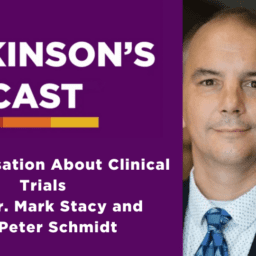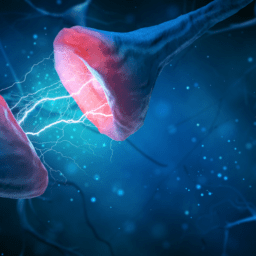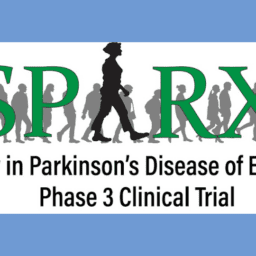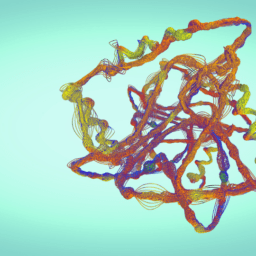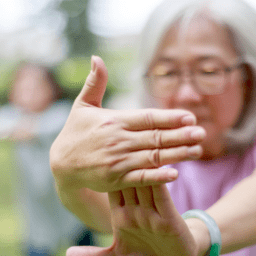Farnesol discoveries. Chlorpyrifos bans. Vaccine researchers. MRI systems. Electrobulbogram tests. All this and more featured in this month’s exciting and noteworthy Parkinson’s news cycle. Let us know if we missed anything!
PARKINSON’S ARTICLES
- In a mouse model study of Parkinson’s, scientists at Sungkyunkwan University School of Medicine in South Korea and Johns Hopkins University School of Medicine in the US have discovered that farnesol, a compound that is widespread in animal tissues and also occurs naturally in plants (and is found in several essential oils), preserves dopamine-producing neurons in the brain. The findings may lead to the development of new medications that replicate the action of farnesol in the brains of people with Parkinson’s.
- A new Environmental Protection Agency (EPA) rule will block the use of chlorpyrifos on food crops. Chlorpyrifos, one of the most widely used pesticides in the United States, has been banned in several countries but in the US is commonly used on corn, soybeans, apples, broccoli, asparagus, and other food crops. Chlorpyrifos has been closely linked to Parkinson’s and is one of the three pesticides highlighted in the “We Give a Dime about Parkinson’s” Red Letter Campaign.
- A feature in this month’s Pharmaceutical Technology explains the current work being done by researchers and pharmaceutical companies to develop vaccines that could prevent Parkinson’s. The article highlights projects in the pipeline and ways a Parkinson’s vaccine could keep alpha-synuclein from forming the toxic clumps that can lead to the onset of Parkinson’s.
- In what they call “the most comprehensive examination of [Parkinson’s] genetics in this population [Latinos] to date,” researchers analyzing genetic data on 1,497 people from nine clinical sites in five Latin American countries (Uruguay, Brazil, Colombia, Peru, and Chile) found that genetic variations in the gene SNCA were associated significantly with Parkinson’s risk among Latinos. Parkinson’s “is a global disease, so it is crucial that genetic studies reflect the wide diversity of patients,” a co-author said.
- Results from a study recently published in Microorganisms suggest that Parkinson’s can cause changes in a person’s oral bacteria that in turn lead to symptoms like drooling and swallowing challenges. Researchers at the University of Texas Health Science Center at Houston found that compared to people without Parkinson’s, study participants with Parkinson’s had more abundant amounts of opportunistic pathogens (microorganisms that under certain circumstances can cause diseases including pneumonia) in their mouths. The findings support the hypothesis that poor oral health in people with Parkinson’s patients is not due to poor oral hygiene but instead is related to Parkinson’s-related impacts on the levels of bacteria known to cause oral disease.
- The U.S. Food and Drug Administration (FDA) has given 510(k) clearance to SpinTech’s STAGE software, which can be integrated directly into existing MRI systems to produce high-resolution imaging data. The FDA clearance will allow radiologists who use the software to more quickly and easily pinpoint biomarkers of neurological conditions like Parkinson’s.
- A small study published in the journal Parkinson’s Disease found that exposure to lead and head trauma that causes a blackout may more than double a person’s risk of developing Parkinson’s. Researchers investigated several environmental risk factors, including exposure to pesticides, heavy metals, and air pollutants, and lifestyle behaviors through a survey of 97 people with Parkinson’s in New England and found that head trauma involving a loss of consciousness, exposure to lead, and a family history of Parkinson’s were all associated with a statistically significant risk of developing Parkinson’s, with head injuries being the greatest risk factor.
- Also investigating possible causes of Parkinson’s, a large population-based study conducted in South Korea recently found that periodontitis (gum disease) may increase the risk of Parkinson’s. The study, published in Scientific Reports, looked at data collected from 2009 to 2017 from 6,825,684 participants ages 40 or older and found that the risk for developing Parkinson’s was higher among individuals with gum disease, even after adjusting for key factors such as age, sex, BMI, and lifestyle habits.
- Using an innovative hydrogel technique has enabled researchers from the Australian National University and the Florey Institute of Neuroscience and Mental Health to safely transfer stem cells into the brain and restore damaged tissue by releasing the growth-enabling protein GDNF. The research team explains that this method of delivery allows more dopamine-producing neurons to survive while also restoring movement in an animal model of Parkinson’s, and they hope the new therapy will show in clinical trials to be a “one-off intervention that can sustain dopamine levels for decades to come.”
- IBM, through a partnership with the Michael J. Fox Foundation, has successfully developed an artificial intelligence model that can make accurate predictions about a person’s Parkinson’s progression, including the likelihood of developing dementia and/or the inability to walk without assistance. The study was recently published in The Lancet Digital Health.
- Research continues to show the important role that mitochondria play in a process that causes Parkinson’s. In a study recently published in Science Advances, researchers from Gladstone Institutes explain the connection between mitochondria life cycles and Parkin and PINK1, key proteins that recycle mitochondria that, when mutated, can lead to Parkinson’s. The team hopes their findings will catalyze future research into the mitochondria recycling process and lead to new therapies.
- Also exploring mitochondria and Parkinson’s is a research team at the University of Buffalo, who recently published findings in the journal Cell Death and Disease of a study that shows how alpha-synuclein does damage to a cell’s mitochondria in multiple ways, leading to the progression of Parkinson’s. The researchers used fruit fly larvae to study how neurons become damaged during neurological diseases like Parkinson’s and discovered, for the first time, how different parts of the alpha-synuclein protein are responsible for causing mitochondria to become unhealthy or to become fragmented. They found that while the proteins PINK1 and Parkin may interact with one end of alpha-synuclein to impact mitochondrial health, another protein called DRP1 may interact with the other end to break mitochondria.
- The cyclical relationship that has been shown to exist between the gut and mental health may predict the severity of severe anxiety and depression in people newly diagnosed with Parkinson’s. In the journal Clinical Parkinsonism & Related Disorders, a study by a team of researchers in the US found that as gastrointestinal (GI) symptoms worsen, the risk of worsening mood symptoms also increases. And, cyclically, as mood symptoms worsen, the risks of more severe GI problems also increases.
- The Parkinson’s Foundation announced this month that they will invest $4.3 million in projects that investigate the underlying causes of Parkinson’s. The funds will support 29 grants for projects centering around the biological mechanisms and basic biology of Parkinson’s, with the goal of finding new treatments.
- In what researchers believe is the first report examining the relationship between uric acid levels and Parkinson’s symptoms, findings from a recent study indicate that people with Parkinson’s who have lower blood levels of uric acid often experience more severe non-motor symptoms such as anxiety, depression, and cognitive dysfunction. The study participants with Parkinson’s who had low uric acid levels also tended to have less brain grey matter, suggesting that uric acid may have a protective effect on brain neurons.
- With the understanding that the olfactory bulb (the part of the brain responsible for scent-perception) is one of the first parts of the brain to be impacted by Parkinson’s, scientists have developed a non-invasive test called an electrobulbogram that measures signals from the olfactory bulb in order to, they hope, spur earlier diagnoses of Parkinson’s. The test involves placing small electrodes on a person’s forehead, which are used to measure odor-induced activity as an electric signal. Results from a small study showed that the ability to smell was much lower for people with Parkinson’s compared to the control group.
PARKINSON’S treatments and THERAPIES
- In a recent peer-review article published in touchNEUROLOGY, leading neurologists and healthcare providers offer a comprehensive review of clinical trial data and pooled and post-hoc data analyses about GOCOVRI® and its treatment effect in reducing dyskinesia and OFF time in Parkinson’s. The independently authored publication reinforces GOCOVRI’s non-interchangeability with other amantadine products and includes a comparison to other OFF treatments for Parkinson’s.
- At the end of a 13-week, double-blind treatment period investigating the efficacy of IPX-203 carbidopa/levodopa extended-release capsules compared with immediate-release carbidopa/levodopa, Amneal Pharmaceuticals, Inc., announced that the trial met its primary endpoint, showing superior “Good On” time from baseline in hours per day. With these late-stage trial testing results, plus additional supportive data, Amneal plans to submit to the FDA a New Drug Application for IPX-203 in mid-2022.
- Researchers at the University of British Columbia Okanagan campus’s Southern Medical Program published a study showing the efficacy of wearable technology and telemedicine for treating people with Parkinson’s. Participants in the study’s telehealth group wore wearable devices that tracked their movements (both involuntary and voluntary) during waking hours, and as a result, the researchers were able to tailor the group members’ medication schedules to better manage their symptoms throughout the day. The group also reported positive experiences and health outcomes as a result of their telemedicine appointments with specialists.
- A randomized, double-blind, sham-controlled, crossover study published in Nature suggests that noninvasive vagus nerve stimulation (nVNS), a therapy used to treat epilepsy, migraine, and cluster headache, may improve gait and other motor symptoms in people with Parkinson’s.
- In a study recently published in Neurology, researchers from Johns Hopkins University found that the use of pimavanserin (Nuplazid), an antipsychotic medication approved by the FDA for Parkinson’s disease psychosis, had an increased risk of 30-day hospitalization and higher mortality for up to a year.
- As part of the second major milestone of an AbbVie and Mission Therapeutics collaboration, AbbVie has nominated two promising deubiquitylating enzyme (DUB) targets to progress to the next stage of drug discovery. Having nominated these DUBs, AbbVie will make a $20 million payment to Mission so they can begin the next phase of Parkinson’s and Alzheimer’s research and preclinical development collaboration.
- CNM-Au8, the lead drug candidate from the biopharmaceutical company Clene Nanomedicine, Inc., has been shown through Phase 2 REPAIR clinical trials to improve energy production and utilization in the brains of people living with Parkinson’s and multiple sclerosis. CNM-Au8 has been shown in several preclinical animal models to safely enable neurorepair, neuroprotection, and remyelination.
- A study involving 209 people with Parkinson’s that was recently published in the journal Clinical Drug Investigation found that those who took anti-epileptic drugs reported a poorer quality of life on questionnaires than did those who do not.
- “There is a very rich pipeline of novel therapies being developed for Parkinson’s — which is extremely encouraging considering the difficulties Parkinson’s research has faced over the last 12 months.” This is the positive conclusion of a paper recently published in the Journal of Parkinson’s Disease, which reports that the pandemic has not hampered Parkinson’s research and that there has even been a slight increase in the proportion of disease-modifying treatments under early investigation.
- A small study published in Clinical Neurophysiology suggests that when administered through the scalp to the brain’s supplementary motor area (SMA), electrical stimulation may ease bradykinesia in people with Parkinson’s. Scientists at the University of Ottawa investigated whether 10 minutes of transcranial direct current stimulation (tDCS) over the SMA would lead to improvements in people with Parkinson’s premotor reaction time and movement and found that the therapy “improved time to peak displacement and overall movement time of an upper limb movement.”
PARKINSON’S LIVING WELL STORIES
- “The most effective treatment for Parkinson’s that we have today was made in 1961. We don’t even drive cars that came from that time anymore.” In a feature about her involvement in a Parkinson’s documentary, Rachel DePietro says she’s grateful to be part of the movement to educate the world about Parkinson’s and advocate for more research, funding, and awareness.
- A $20,000 community grant from the Parkinson’s Foundation will help fund the Parkinson’s Movement Initiative for a fifth year. The program, which is free for people with Parkinson’s and their care partners, offers weekly classes that focus on movement and the mind-body connection.
PARKINSON’S SURVEYS, CLINICAL TRIALS, and volunteer opportunities
Genetic Counseling Training Program Research – If you have a diagnosis of Parkinson’s, you are invited to participate in a research study led by Sydney Richards, a master’s student in the Genetic Counseling Training Program at the University of Maryland School of Medicine. Sydney is conducting a new research study to better understand the experience of individuals with Parkinson’s with genetic testing. The study includes a short, online survey that should only take about 15 minutes to complete. All answers are anonymous. This study is voluntary, and your decision to participate will not affect your medical care. If you are interested in learning more about this study, click here. Responses will be accepted until November 16, 2021.
SPARX3 – A Phase 3 Clinical Trial about Exercise and Parkinson’s – This research team is currently seeking volunteers to participate in a clinical trial about the effects of aerobic exercise on people with Parkinson’s. Learn more and see if you qualify here. For more details, contact Katherine Balfany at SPARX3@ucdenver.edu.
Do you have early-stage Parkinson’s? The Orchestra Study is a clinical research study to evaluate the use of an investigational medication called UCB0599 in men and women with early-stage Parkinson’s. You can learn more and see if you qualify here.
PAIRing Up – If you are a person with Parkinson’s or a care partner to someone with Parkinson’s, you are invited to participate in an online survey to address neuropsychiatric (cognition, depression, anxiety) concerns in Parkinson’s. The survey aims to learn about the needs and priorities for clinical care, education, support, and research related to neuropsychiatric symptoms. To learn more and participate, click here to download the flyer.
A multidisciplinary research team in the UK is investigating how to best use music to help people with Parkinson’s manage symptoms related to movement and mood. This includes research about music for dancing and is the first study to incorporate the new Dance Sophistication Index for people with Parkinson’s. To learn more and take a 30-minute survey, click here.
The University of Oulu and collaborators from Aalborg University, Fraunhofer University, the University of Manchester, the University of Glasgow, the University of Lisbon, and the University of Melbourne, are conducting a survey for people with Parkinson’s and Parkinson’s care partners about self-care. Complete the survey here to share your self-care strategies and techniques. You can also review ideas submitted by others and add them to your own self-care toolbox.
BouNDless – Phase 3 trial to investigate the efficacy, safety, and tolerability of ND0612, a continuous subcutaneous levodopa/carbidopa delivery system in comparison to oral levodopa/carbidopa in people with Parkinson’s experiencing motor fluctuations
Parkinson’s Progression Markers Initiative (PPMI) Screen Survey – The Michael J. Fox Foundation
Home-based Exercise and Cognitive Behavior Therapy – University of Alabama in Huntsville
Speech and Telemedicine Study – The Purdue Motor Speech Lab
Parkinson’s and Service Dogs – University of Groningen, Netherlands
Neurology Study Interest Registry – University of Rochester
Park Test – University of Rochester
Project Euphonia – LSVT Global and Project Euphonia
For more of what’s new in Parkinson’s news, check out our full series here.
WANT MORE PRACTICAL ARTICLES LIKE THIS?
You can find much more in our Every Victory Counts® manual. It’s packed with up-to-date information about everything Parkinson’s, plus an expanded worksheets and resources section to help you put what you’ve learned into action. Request your free copy of the Every Victory Counts manual by clicking the button below.
Thank you to our 2021 Peak Partners, Adamas, Amneal, Kyowa Kirin, and Sunovion, as well as our Every Victory Counts Gold Sponsor AbbVie Grants, Silver Sponsor Lundbeck, and Bronze Sponsors Supernus and Theravance for helping us provide the Every Victory Counts manual to our community for free.







